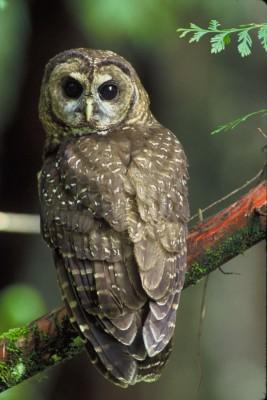 Cascadia Wildlands first grew out of a movement to protect old-growth forests on our federal forest lands outside of Eugene, Oregon. These efforts that began nearly 20 years ago continue to be the bread and butter of our organization and the backbone for the protection of clean water, recreation, imperiled species, and threatened ecosystems in the Cascadia bioregion. This work is critical in our region because federal forests cover up to 20 million acres in western Oregon alone.
Cascadia Wildlands first grew out of a movement to protect old-growth forests on our federal forest lands outside of Eugene, Oregon. These efforts that began nearly 20 years ago continue to be the bread and butter of our organization and the backbone for the protection of clean water, recreation, imperiled species, and threatened ecosystems in the Cascadia bioregion. This work is critical in our region because federal forests cover up to 20 million acres in western Oregon alone.
Although Cascadia Wildlands has close working relationships with many agency staff and participates in forest collaborative groups, it is often necessary and strategic to litigate these timber sales over violations of federal environmental law. Many environmental laws interact with federal forest management including the National Environmental Policy Act, the Endangered Species Act, the National Forest Management Act, and the Federal Land Policy and Management Act among others. It is our duty to ensure that these laws and policies are enforced to protect the values that old forests provide to the good people of Cascadia.
Although our forest litigation is frequently featured in the press and beleaguered by corporate timber interests and their politicians, our decisions to litigate for these violations of federal law are not made lightly. We strategically pick our battles given the cost of litigation, the investment of time and energy required, and the potential for setting bad precedent moving forward. Litigating a single timber sale generally takes upwards of three years to resolve.
This is currently a critical time for our public forests in Cascadia. Not only is there is increasing pressure building from those interests that want to privatize our public lands, both the Forest Service and the Bureau of Land Management are currently revising the management plans of these 20 million acres that will dictate which areas and values are protected and those areas that are not. Check out more details below on these plan revision efforts and our continual fight to prevent irreparable damage from individual timber sales:
• Western Oregon Plan Revision: The Bureau of Land Management (BLM) is a federal agency responsible for the management of over 2.5 million acres of forests in western Oregon. These forests were formerly managed under the Northwest Forest Plan. The Northwest Forest Plan was a hundred year forest management plan developed by the Clinton administration in the early 1990’s that attempted to balance timber harvest with the protection of public values in light of the listing of the northern spotted owl on the federal Endangered Species Act list. On August 5, 2016, the BLM signed a decision abandoning the Northwest Forest Plan to dramatically increase timber harvest in formerly reserved areas and cut protections across the board. On August 9, 2016 Cascadia Wildlands and a tight coalition of conservation groups sued the BLM over this decision and its prioritization of timber harvest over sounds science and the required protection of public values.
• Northwest Forest Plan Revisions: The Forest Service manages 17 different National Forests stretching from northern California to southern Washington within the range of the northern spotted owl. These National Forests and the seven different BLM Districts discussed above encompass the Northwest Forest Plan area. The Northwest Forest Plan was a fifty year plan developed in 1994 to balance the protection of clean water, imperiled species, recreation, and timber production. While far from perfect, the Plan has cleared defined and enforceable standards, which were largely tossed out by the BLM in its revision. The Forest Service is just now initiating its plan revision process, which we anticipate will take upwards of several years. The process has begun with a science synthesis which is building a summary of relevant scientific publications and studies. Cascadia has been participating in this ongoing process to ensure a scientifically sound foundation for the revision.
In addition to broad programmatic approaches to land management in the Pacific Northwest, Cascadia Wildlands prides itself on monitoring individual timber sales planned on our public lands. This involves close coordination with agency staff, extensive field-checking of these sales, drafting comments and administrative protests, and occasionally litigation. If you are interested in getting involved in this process, check out the Cascadia Action Team (WildCAT) which has been incredibly helpful in advancing oversight and participation. https://www.cascwild.org/about-us/volunteer-opportunities/
Again, Cascadia Wildlands strives to prevent harmful logging projects from moving forward through public administrative processes, but occasionally these timber sale challenges result in litigation. When it does, Cascadia organizes affected local interests which often include communities, recreation groups, fellow conservation organizations, and even commercial interests that oppose the exploitation of public forests. Check out a selection of recent and ongoing challenges highlighted here.
Photo: Conservation groups sued the U.S. Forest Service 2 years ago over concerns the agency hadn’t done enough analysis of how the Goose project would affect wildlife habitat, including the threatened northern Spotted Owl (photo courtesy Cascadia Wildlands).
